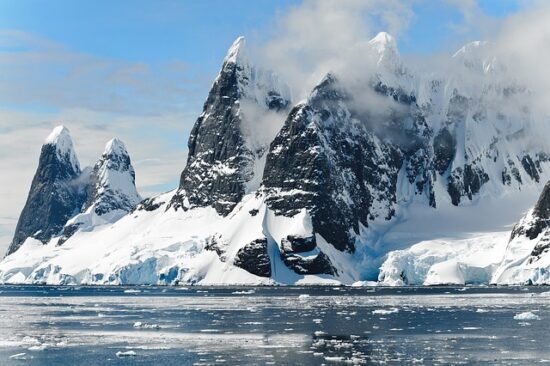The Arctic is home to many animals and humans especially those that have adapted to living in extreme cold climates. No wonder it is one of the most spectacular landscapes on earth that is covered almost entirely with ice sheets. The ice is just about everywhere and remains there for millions of years. The Arctic lies at the northernmost tip of the earth and it touches many countries ranging from Alaska, Greenland to as far Russia.
Arctic Facts For Kids
Climate & Weather
- The place where ice rules all year round explains everything about its weather. People living in the Arctic know it all too well and so do Arctic animals. But the climate differs from one region to the other. That is to say if in Russia the temperature reaches 0o C the Canadian arctic shows -16.2o
- Similarly the one that touches the United States’ territory (Alaska) has temperature of about -12.2o C while that of Iceland averages 4o C in mean temperature. It shows that while the overall behavior of the Arctic is below zero degrees Celsius the temperature is not the same throughout the polar region.
- The Arctic Ocean has the lowest temperature of about -18o However the cold Arctic’s weather may be it receives less than 50 cm (20 in) of precipitation per year. The land of ice receives precipitation in the form of snow. The maximum lowest temperature recorded of Arctic land is about −68 °C (−90 °F).
 Plants in the Arctic
Plants in the Arctic
- There are around 177 plants species in the Arctic region which is only 3% of the total number of recognized plants in the world. This is probably due to the extreme weather conditions which however are suitable for many animals may not be appropriate for plants to grow.
- Prominent among the Arctic plants include lichens, mosses, graminoids, dwarf shrubs, and herbs.
- The wide expanse of the Arctic land does not have a single tree. In some areas, the shrubs grow as high as 6 feet. High Arctic vegetation such as this is less likely to grow in the coldest parts.
Arctic Animals
- The Arctic is arguably one of the most hostile lands for most animals. Still it is home to many large to medium-size herbivorous mammals including muskox, Arctic hare, caribou, wolf, Arctic fox, and lemming.
- There are only 20 fish species recognized in the Arctic waters. Unique among these are Arctic char (Salvelinus alpinus) and salmon (Salmo salar).
- It is also home to as many as 60 seabird species. While some of them are migratory others are permanent residents. It means that Arctic holds the largest population of the seabirds.
- While muskox is the probably the largest herbivorous land mammal of the Arctic polar bear is the largest carnivorous land mammal.
- Other animals include snowy owl, Arctic ground squirrels, walrus, narwhals, belugas, baleen whales, wolverine, orcas, and ermines.
People & Population
- The total population of the Arctic is 2,000,000 – 4,000,000 but due to the fact that the Arctic’s territory is not properly divided it is hard to count the number of people.
- The Arctic population includes all humans those that were the first to arrive called indigenous people and those which have settled because of their occupation, still others that visit Arctic only to hunt wild animals.
 Cool Facts about the Arctic
Cool Facts about the Arctic
- Although it has harsh and cold climate yet studies show that people might have been living on the Arctic for as long as 20,000 years.
- Thanks to the Arctic which supplies one-fifth of the total freshwater of the Earth.
- There are 8 Arctic nations in the world; Denmark, Iceland, Sweden, United States, Norway, Canada, Finland, and Russia.
- There are 9 Arctic seas including Kara Sea, Beaufort Sea, Chukchi Sea, Laptev Sea, Norwegian Sea, Greenland Sea, Bering Sea, Barents Sea, Greenland Sea, and East Siberian Sea.
- The total area of the Arctic Ocean is about 14,000,000 square kilometers.
- The total area that wetlands cover is about 3,500,000 square kilometers.
- Arctic is a land of many marine fossils, flat plateaus, large glaciers, and rugged uplands.
- Arctic supplies freshwater through its streams, lakes, rivers, ponds, and peatlands. The small lakes or ponds freeze in winter while the large water bodies flow all year round.
Learn more:
- Arctic Ocean Facts for Kids
Leave a Reply